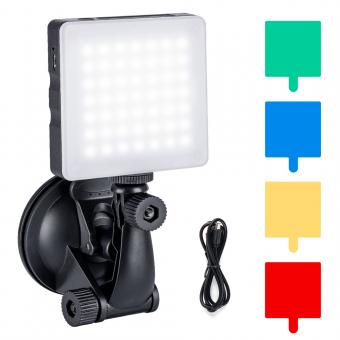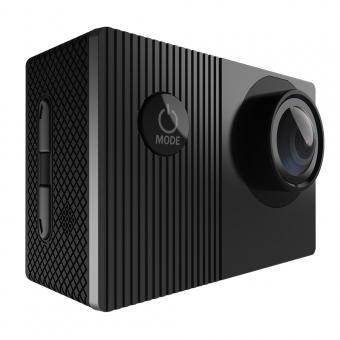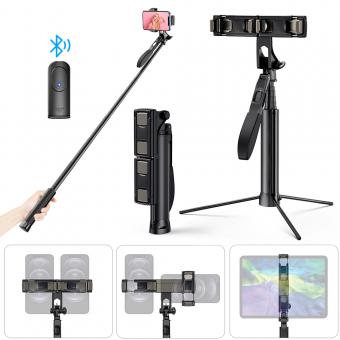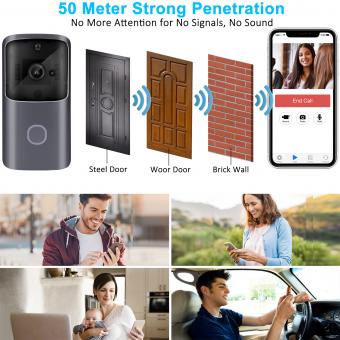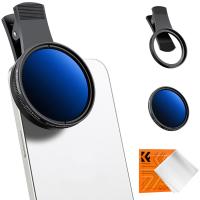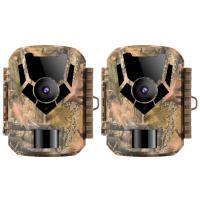How Does A Video Doorbell Work ?
A video doorbell is a device that allows homeowners to see and communicate with visitors at their front door through a smartphone or tablet. The device typically includes a camera, microphone, and speaker, and is connected to the internet via Wi-Fi. When someone rings the doorbell, the camera captures a video of the visitor and sends a notification to the homeowner's smartphone or tablet. The homeowner can then see and speak to the visitor through the device's app, even if they are not at home. Some video doorbells also include motion sensors, which can alert the homeowner to any activity outside their front door, even if no one rings the doorbell. Overall, a video doorbell provides an added layer of security and convenience for homeowners, allowing them to monitor and interact with visitors from anywhere.
1、 Camera Technology
How does a video doorbell work? The answer lies in camera technology. A video doorbell is essentially a smart doorbell that is equipped with a camera and a microphone. When someone rings the doorbell, the camera captures a video of the person standing at the door and sends it to the homeowner's smartphone or tablet. The homeowner can then see who is at the door and communicate with them through the microphone.
The camera technology used in video doorbells has come a long way in recent years. The latest video doorbells are equipped with high-definition cameras that can capture clear and detailed images even in low light conditions. They also have wide-angle lenses that provide a 180-degree view of the area around the doorbell.
One of the key features of video doorbells is motion detection. The camera is programmed to detect motion and send an alert to the homeowner's smartphone when someone approaches the door. This feature is particularly useful for homeowners who want to keep an eye on their property when they are away from home.
Another important aspect of video doorbells is their connectivity. They are typically connected to the homeowner's Wi-Fi network, which allows them to send video and audio data to the homeowner's smartphone or tablet. Some video doorbells also have built-in storage, which allows them to store video footage for later viewing.
In conclusion, video doorbells work by using camera technology to capture video and audio data of people who approach the door. The latest video doorbells are equipped with high-definition cameras, wide-angle lenses, and motion detection features. They are also connected to the homeowner's Wi-Fi network, which allows them to send data to the homeowner's smartphone or tablet.
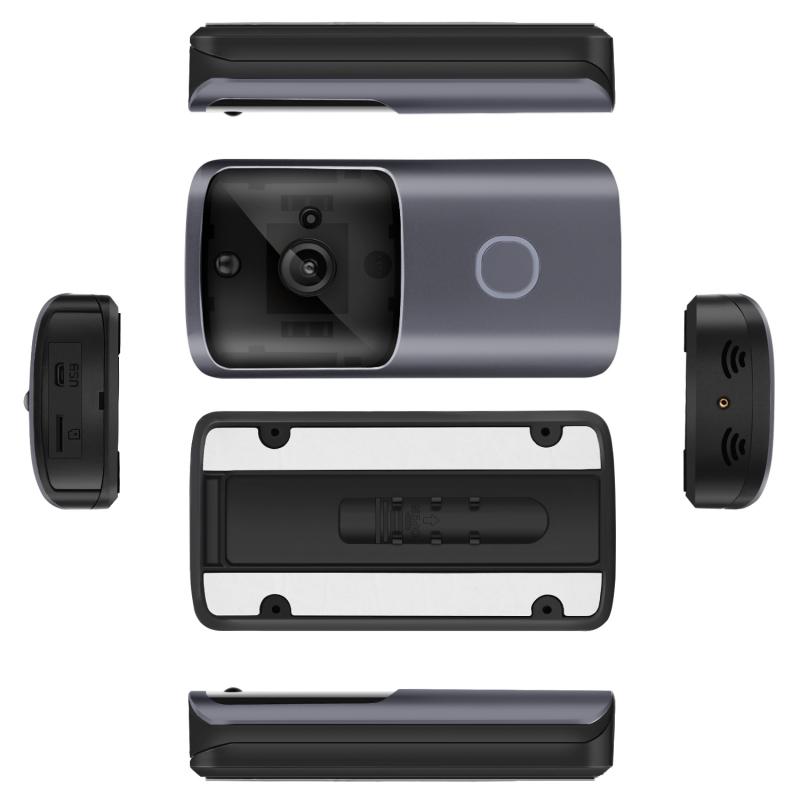
2、 Motion Detection
How does a video doorbell work? One of the key features of a video doorbell is motion detection. When someone approaches your front door, the motion sensor in the doorbell detects the movement and sends an alert to your smartphone or other connected device. This allows you to see who is at your door, even if you're not at home.
The latest video doorbells use advanced motion detection technology to reduce false alarms and improve accuracy. For example, some models use artificial intelligence to distinguish between people, animals, and other objects. This means you'll only receive alerts when someone is actually at your door, rather than every time a car drives by or a leaf blows across your lawn.
Once you receive an alert, you can open the app on your smartphone to see a live video feed from the doorbell's camera. This allows you to see who is at your door and communicate with them through the built-in speaker and microphone. Some video doorbells also have additional features, such as night vision, two-way audio, and the ability to record and store video footage.
Overall, video doorbells are a convenient and effective way to monitor your front door and improve home security. With advanced motion detection technology and other features, they provide peace of mind and help you stay connected to your home no matter where you are.
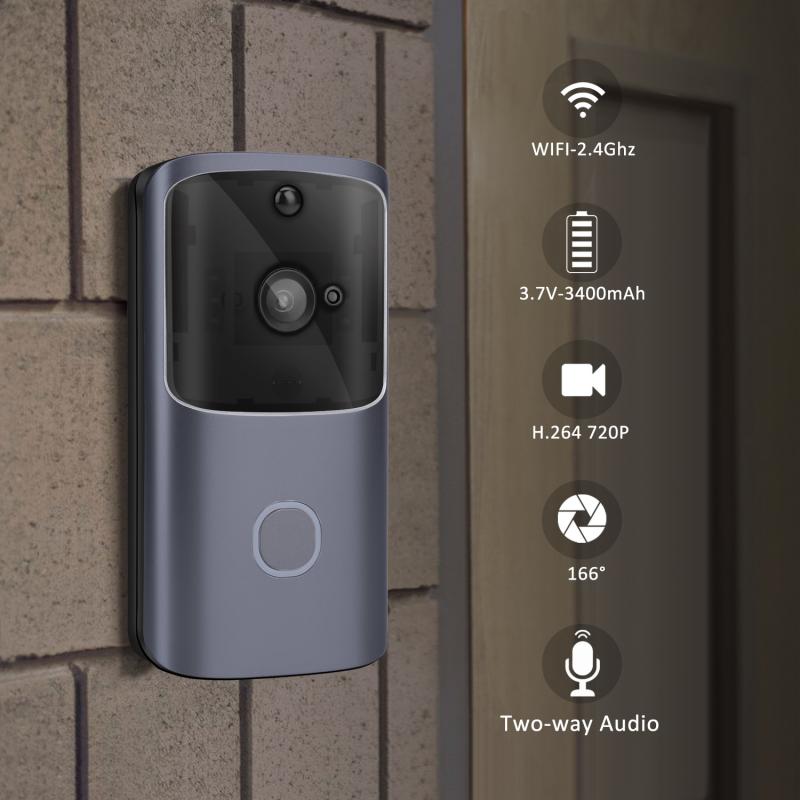
3、 Two-Way Audio
A video doorbell is a smart home device that allows homeowners to see and communicate with visitors at their front door through a mobile app on their smartphone or tablet. The device is equipped with a camera, microphone, and speaker, which enables two-way audio and video communication.
When someone rings the doorbell, the camera captures a live video feed of the visitor and sends it to the homeowner's mobile device. The homeowner can then see and hear the visitor and decide whether to answer the door or not. If the homeowner chooses to answer, they can communicate with the visitor through the two-way audio feature.
The latest video doorbells also come with advanced features such as motion detection, night vision, and facial recognition. Motion detection allows the device to detect movement and send an alert to the homeowner's mobile device, even if the visitor doesn't ring the doorbell. Night vision enables the camera to capture clear video footage in low-light conditions, while facial recognition technology can identify familiar faces and alert the homeowner accordingly.
Overall, a video doorbell provides homeowners with an added layer of security and convenience. They can monitor their front door from anywhere, communicate with visitors without opening the door, and keep an eye on their property even when they're not at home.
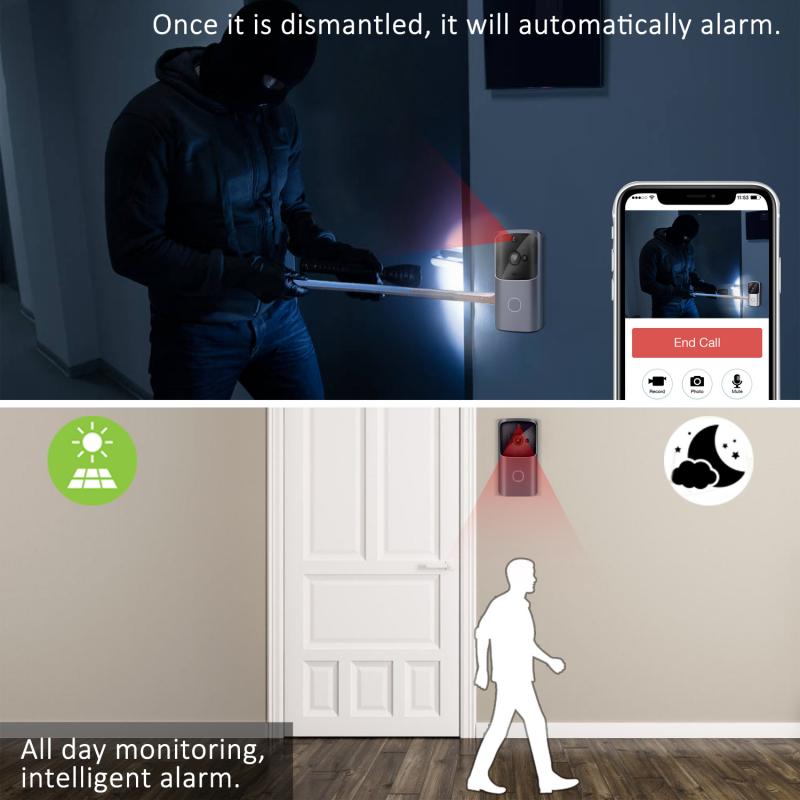
4、 Cloud Storage
How does a video doorbell work? A video doorbell is a smart device that allows homeowners to see and communicate with visitors at their front door through a mobile app. The device is equipped with a camera, microphone, and speaker, which are connected to the internet via Wi-Fi. When someone rings the doorbell, the camera captures a video of the visitor, and the homeowner receives a notification on their smartphone. They can then view the video and communicate with the visitor through the app.
One of the latest advancements in video doorbells is the integration of artificial intelligence (AI) technology. AI-powered video doorbells can recognize and differentiate between people, animals, and vehicles, and can even detect suspicious activity. This feature provides an added layer of security for homeowners, as they can receive alerts when someone is at their door, even if they are not home.
Another important aspect of video doorbells is cloud storage. Most video doorbells come with a subscription service that allows homeowners to store their video footage in the cloud. This means that even if the device is stolen or damaged, the footage is still accessible. Cloud storage also allows homeowners to review past footage and monitor activity around their home.
In conclusion, video doorbells are a convenient and effective way to enhance home security. With the latest advancements in AI technology and cloud storage, homeowners can have peace of mind knowing that their homes are protected.







